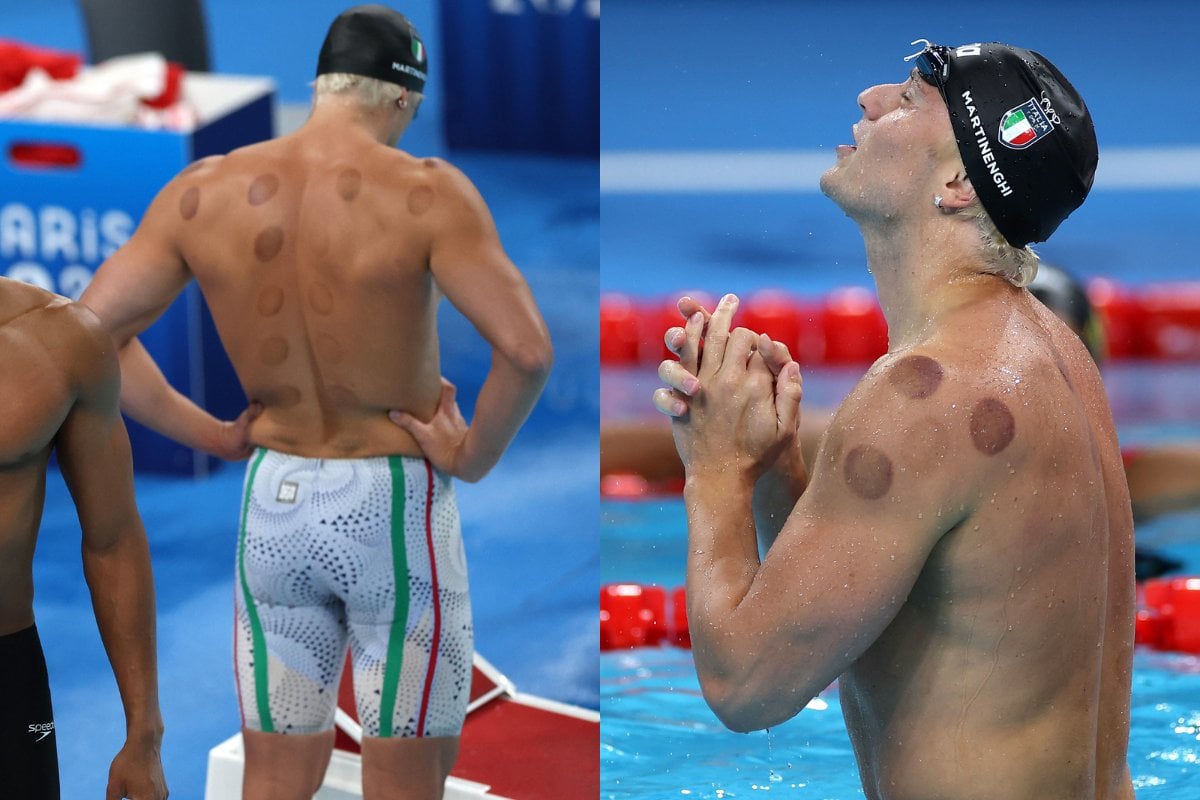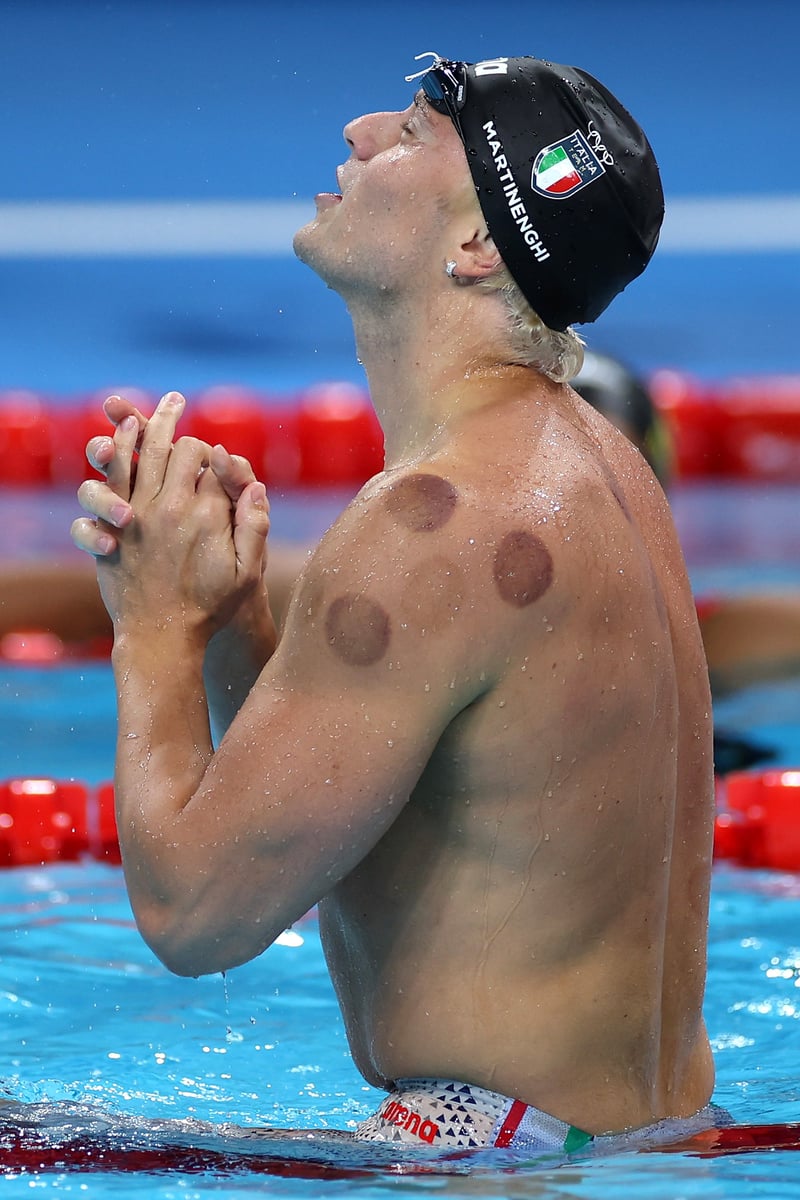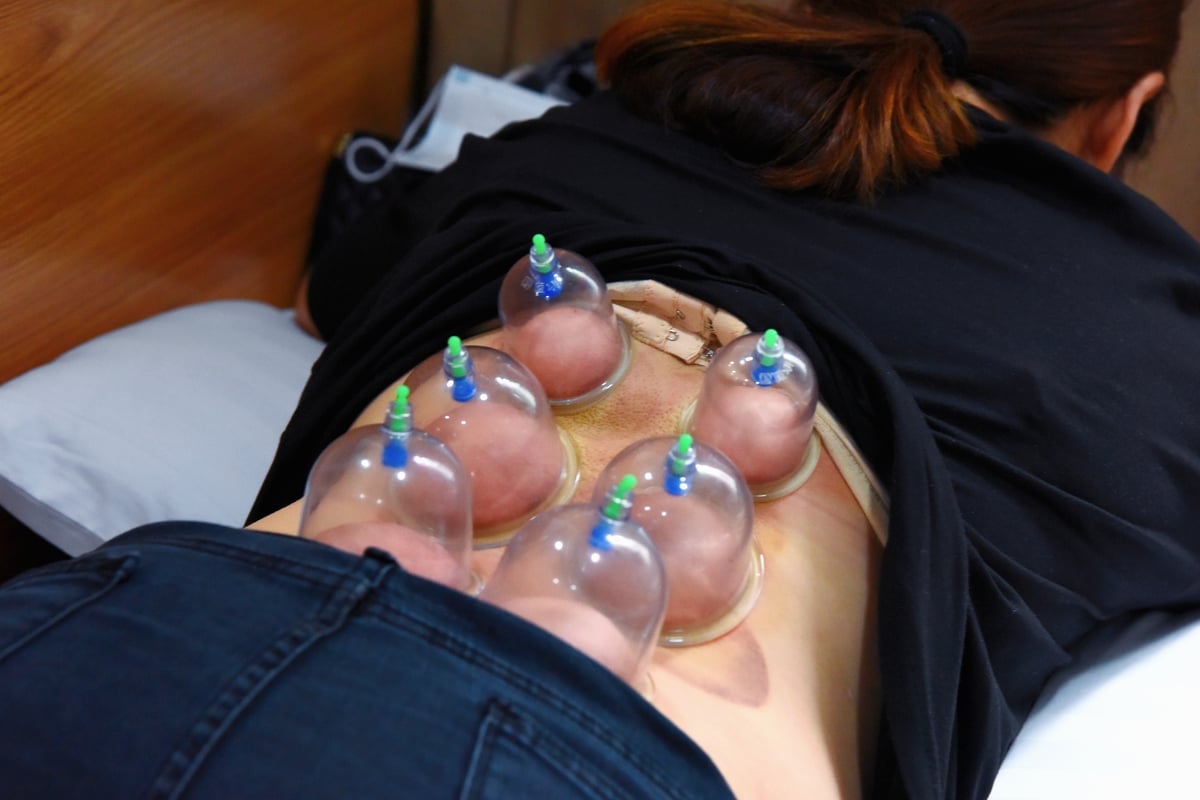
To get up to speed on everything Paris 2024 Olympics, check out our Olympics hub page. We've got you covered.
If you're a lass with eyes, chances are you've been watching the 2024 Paris Olympics. Specifically, the swimming. Cause everyone knows that's where it's all at, right?
Along with swimming coach Dean Boxall going absolutely ape s**t following Ariarne Titmus' huge win (YTG), we'd like to talk about the fact that so many swimmers at this year’s Olympics are just quietly covered in dark splotches?
Watch: Susie O'Neill on her 'failure' at the Sydney Olympics. Post continues below.
You know the ones we're talking about, yeah? The kind of bruises you get when you go paint balling or something?
Here's Italian swimmer Nicolo Martinenghi covered in them:
 Image: Getty
Image: Getty




Top Comments